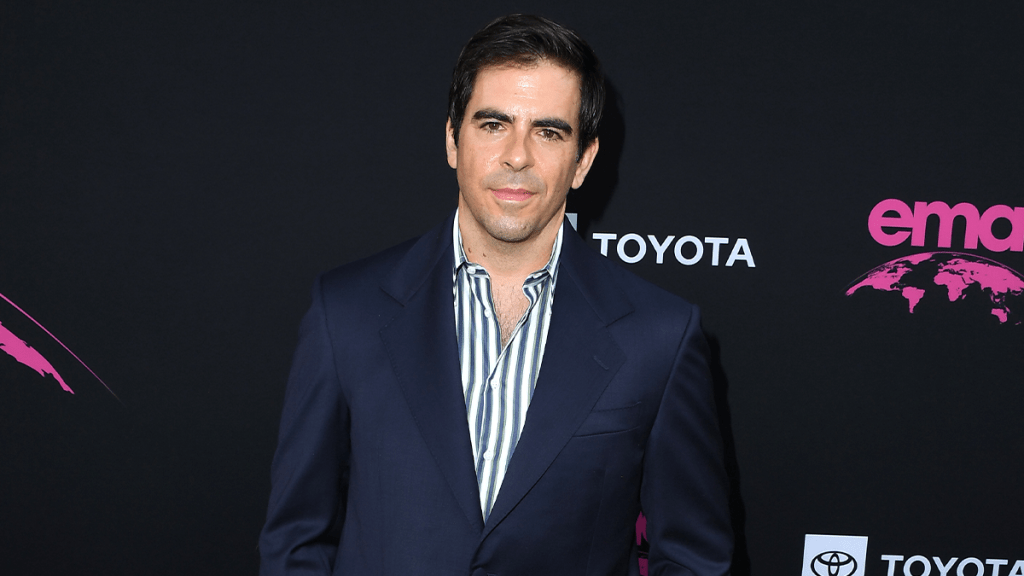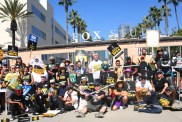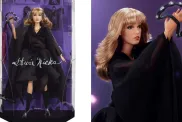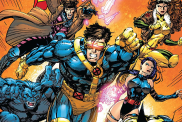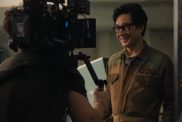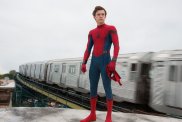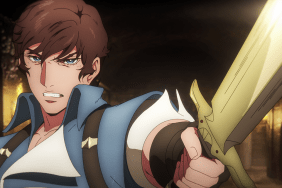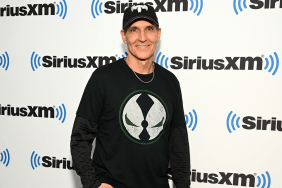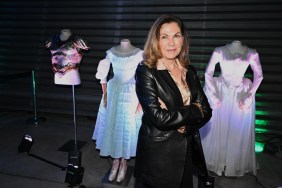ComingSoon Editor-in-Chief Tyler Treese spoke with Fright Krewe co-creator Eli Roth about DreamWorks Animation‘s animated horror series. Roth discussed writing horror for different age groups and setting the series in New Orleans. The 10-episode coming-of-age series is now streaming on both Hulu and Peacock.
“An ancient prophecy and a Voodoo Queen put misfit teens in charge of saving New Orleans from the biggest demonic threat it’s faced in almost two centuries. But, honestly? Saving the world might be easier than becoming friends,” reads the series‘ synopsis.
Tyler Treese: When it comes to doing PG-13 horror, does the underlying philosophy change any in regards to what’s scary or how you incorporate horror? Are there more similarities than one would expect between R-rated horror and something like Fright Krewe?
Eli Roth: That’s a great question. The basic philosophy [depends on] which audience you’re going for. One of the reasons I made The House With a Clock in its Walls for Amblin as a straight PG movie was I wanted to make a movie for 8, 9, and 10-year-old kids to get them into horror and give them that safe, fun, and scary experience that I had when I was a kid. I didn’t start out at Make Them Die Slowly and Cannibal Holocaust, or even Friday the 13th. The first stuff I saw when I was a kid was Pinocchio — the whale really scared me. Years later, someone pointed out that Hostel, weirdly, structurally is Pinocchio, but Pinocchio getting swallowed by the whale was terrifying, and the kids being turned into jackasses on Pleasure Island — that really affected me.
But I loved it. I loved that feeling of being scared in a safe way. When I was a kid, I watched Scooby-Doo all the time. I loved the mysteries, I loved the monsters, I loved the scares. Anytime Abbot and Costello, when they met the Wolfman, or they met Frankenstein, my gosh … it was like combining my favorite things in the world. It was monsters and comedy. So with James Frey, when we sat down — it was almost 10 years ago — to begin conceiving of this, we said we wanted to do something for our kids and for the next generation that would be their own Scooby-Doo.
We wanted to create a modern version of something that was scary, but for kids. You really can teach the values of friendship and bravery and overcoming your fears and overcoming your demons and monstrous sides of ourselves and things we’re embarrassed by — all the stuff that kids go through, but doing it in a really fun, scary way. So the goal is to give them a really fun fright, but not traumatize the kids. You can’t do that to them. Adults: have at it. You can give them nightmares for the rest of their lives, but for kids, there is a bit of a responsibility that you have to give them something that’s fun and scary, but that really, really has a smart message behind it.
From The House With a Clock in Its Walls and the documentary FIN to this, you’ve gotten to show off your range. Do you feel like you aren’t seen only as this very R-rated horror guy anymore, since you’ve shown you can do all these other types of work?
Well, sure, and I think that also comes with age. When you get known for something … Hostel was lightning in a bottle and it hit at the right time, and I was doing all the publicity for it. I loved it and I still love it, and I’m happy to be front and center on horror because it’s what really fires me up creatively. But at a certain point, when you find you’re repeating yourself or you want to expand or do other things … that was really someone like Tarantino having me act Inglorious Basterds, and then me trying to branch out into other types of movies and making documentaries and just pushing myself to get out of my comfort zone and not worrying about embarrassing yourself or doing a bad job. It’s funny, because now when people think of me, they think of, “We’ve got to save sharks. We’ve got to protect sharks,” which is exactly what I wanted, to take that horror persona, or he makes scary movies persona and to show that, “He’s actually a real human being and does care and is pointing out this real and tragic slaughter that’s happening that nobody’s talking about, because nobody wants to stop making money from it.”
So I appreciate that. I’m glad when people go with me into other things, but I think everybody’s like that. I think people are multifaceted and I think they have a lot to offer. I think that as long as you do it well, people will go with you. I began in animation. Before I made Cabin Fever, I did 20 animated shorts. When I was a kid, I used to sit and draw all day with stop-motion drawing and drawing and drawing.
I studied animation in school, so I do have somewhat of an animation background and a deep passion for it. To be able to have my own animated series that, obviously, it’s an incredible team, with Joanna Lewis and Kristine Songco and Shane Acker and the amazing people at Dreamworks Animation and the cast behind you doing it. It’s a lot of people to do it. It’s really a dream come true, but I think what you’re talking about … I always said, “I’m going to be very patient and whatever I do, I’ll just try to do it well.” If people only think of me for Hostel, that’s okay. If they only think of me for Inglorious Basterds, that’s okay too. I’m someone with a lot of different tastes. Whatever I do, I just try to do it well.
What I really enjoyed about Fright Krewe was the New Orleans setting, as there’s so much to play with there. What made you decide that New Orleans is the right place to put this series in?
Well, New Orleans, there’s nothing like it anywhere in America. It’s such an incredible, incredible city with such rich history. We thought about New Orleans and we thought about how it had been portrayed and it’s Mardi Gras and you think of voodoo and how I had seen voodoo portrayed for years, which is someone putting a voodoo spell on you that I’d never seen, at least in kids’ scary animation — something that was really, really thoughtfully and respectfully done. We obviously did research trips and we had a technical advisors and voodoo priestess and priests that were really working with us and the scripts to make sure that we were being inventive with the fantasy of the story, but we want it grounded in a certain reality, in a really, really respectful way, so that you learn something about it and you learn something interesting.
You might go, “Wow, I didn’t know anything about that. That’s so cool.” Horror is a great way to “Trojan Horse” and all these ideas and different values and different educational things, where kids don’t feel like they’re being spoonfed medicine, but they come out of it with a new appreciation and a new love. I want kids to watch the show and I want them to be excited to go to New Orleans and to see all these places that are really portrayed in the animated series. So it just offered us so much that was so rich and so creative, this really wonderful diverse world where you could believe there are werewolves and vampires. I mean, there’s ghost tours that happen in the city all the time now. So it felt like the perfect setting. You really couldn’t set this in any other city.
Cabin Fever just celebrated the 20th anniversary of its theatrical release. How do you look back on that movie? It’s such a milestone for you and really put you on the map.
It is crazy. I mean, in one way, I can’t believe it was 20 years ago. In another way, it was yesterday, because it’s still such a part of my life. I wrote that movie when I was 21 or 22 years old. I wrote it when I was like a senior. I graduated film school and said, “I’m going to make this movie right now.” The film was written in ’95 or ’96, so I think 1995 was when I wrote the first draft or finished it with Randy Pearlstein. So for me, it’s something that is like a 30-year-old story that’s been in my head. It was so stressful and so nerve-wracking that it’s really nice to see the write-ups about how we really made this movie on credit cards and spit and glue and we sold it at the film festival.
It was one of those things that really did change my life overnight. I just wanted to help bring back the R-rated horror movies that I loved so much. It felt like it was the beginning of a new wave of a kind of rebirth of horror films. Obviously, along with Rob Zombie and James Wan and Greg McLean, Alexandre Aja, Neil Marshall, and a whole bunch of people — we all felt that way. It’s so nice that it’s looked back on fondly and that people still enjoy it. The goal was that I always wanted to make a movie that kids watch at sleepovers that if you’re still watching it 15 or 20 years from now at a sleepover, that’s a success, because those are the movies that I loved: when you’re having a sleepover and you put something on at two in the morning and it’s this weirdo movie with all these insane deaths and crazy dialogue and you just have fun living with those characters in that world.
I wasn’t even thinking about it. I’m so focused on Thanksgiving and on Fright Krewe and on finishing those. Fright Krewe has been a 10-year journey to come out that I don’t even think about it, but it’s really nice that other people do. It’s wonderful that it’s still a relevant title all these years later.
You once said, “If I don’t come home covered head-to-toe in fake blood, then I haven’t done my job as a horror director.” Is that still the case with Thanksgiving?
Well, that was before I could afford nice clothes. [Laughs]. And let me say that that should have an asterisk. If I’m not wearing Missoni, like if I have a beautiful Missoni knitwear sweater, I do not want to get blood on that. But I actually have my blood clothes and, for sure, on Thanksgiving … I have clothes now that I only wear when I’m directing. They’re the same pants, they’re the same sweatshirts, and they are designed to get soaked in blood. So yeah, I love to get in there, I love to mix it up, and I also like to show the crew that I’m not afraid to literally get down and dirty.
So if we need to do something with blood or something needs to get sticky, I’m the first one to do it and it kind of breaks the ice and puts everyone at ease. So yeah, whenever I’m shooting these scenes, there’s sometimes where I don’t even want to wash it, but then it starts to get sticky and make a mess and you get bugs, so eventually you have to wash them. But I, for sure, have bloodstained shoes, bloodstained shirts — it’s the best. It’s a sign that you’re, you’re doing something right.
Were there any other seasonal horror movies that you’re particularly fond of or drew some inspiration from when creating Thanksgiving?
For sure. I mean, look, obviously, I grew up in Massachusetts, so every year at Thanksgiving, Jeff Rendell — who I wrote it with — we were waiting for a Thanksgiving slasher film. It never happened. We had Halloween, you had Silent Night, Deadly Night at Christmas, you had My Bloody Valentine, you had April Fool’s Day, you had Mother’s Day.
But there was never one for Thanksgiving. It seemed so obvious to us, so from the time we were 12 or 13 years old, we always wanted to do it, because Thanksgiving is obviously is a huge deal in Massachusetts with the pilgrims. You went to Plymouth Plantation/Plimoth Patuxet in Sturbridge Village and saw all these pilgrim recreation villages. So we really wanted to do a modern take and create a new mythology and a new slasher film. The way I think of it is that if you love Thanksgiving, you’re going to want your kids to be into horror films.
And that’s why, for the parents, there’s Thanksgiving. But for the kids, there’s Fright Krewe. With Fright Krewe, we really wanted to create a show for people that grew up with Scooby-Doo and want their kids to be into scary stuff. Or the kids like stuff scary, but it’s going to be safe, it’s going to be okay. You’re not going to get nightmares. But there’s a whole world. Kids love monsters. In Scooby-Doo, it’s always the guy in the rubber mask. We wanted real monsters with real mythology. So it’s a whole new world of monstrous creations that I think the kids are going to love. But we wanted a show that the parents and the kids could watch together. But then in November, you get a babysitter. They can watch Fright Krewe, the parents will go out to Thanksgiving, but something for everyone in the household.
Borderlands is also coming. What kind of sense of humor can we expect? Some of the games get very reference heavy, so what can we expect there?
It’s bananas. I really wanted to keep the spirit of the movie in the spirit of the games. Randy Pitchford, the creator, was there with me every step of the way. If I had my own idea for a joke that’s not part of Borderlands in the canon, he’s like, “Oh, that’s great. Claptrap would absolutely do this.” All the character stuff that I wanted them to do, I’m like, “Okay, would Lilith do something like this?” Or, “Is this a Tiny Tina move?” He’s like, “That is so fantastic. We should do that in the game. That’s really, really terrific.” So yeah, the film is fun. It is wild. It was a massive, massive undertaking — especially in Covid. People are going to have to wait a little longer for that one, but I’m really, really thrilled with it.
